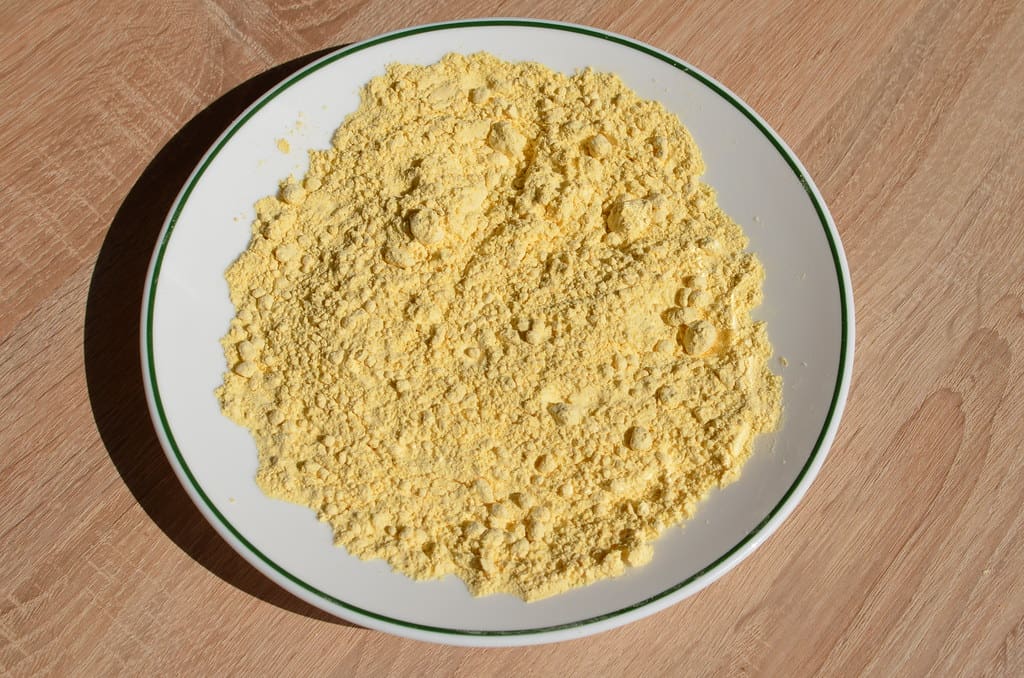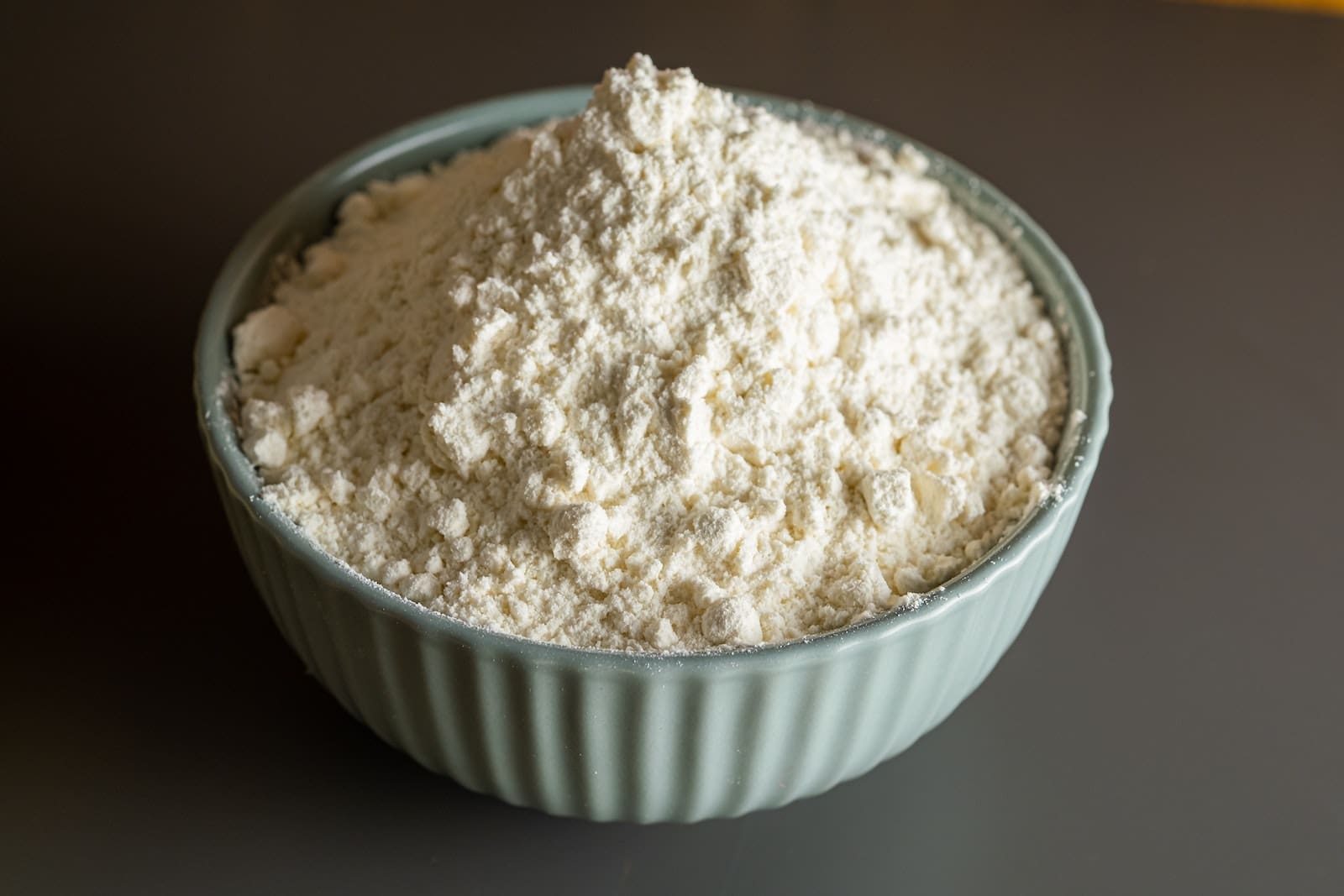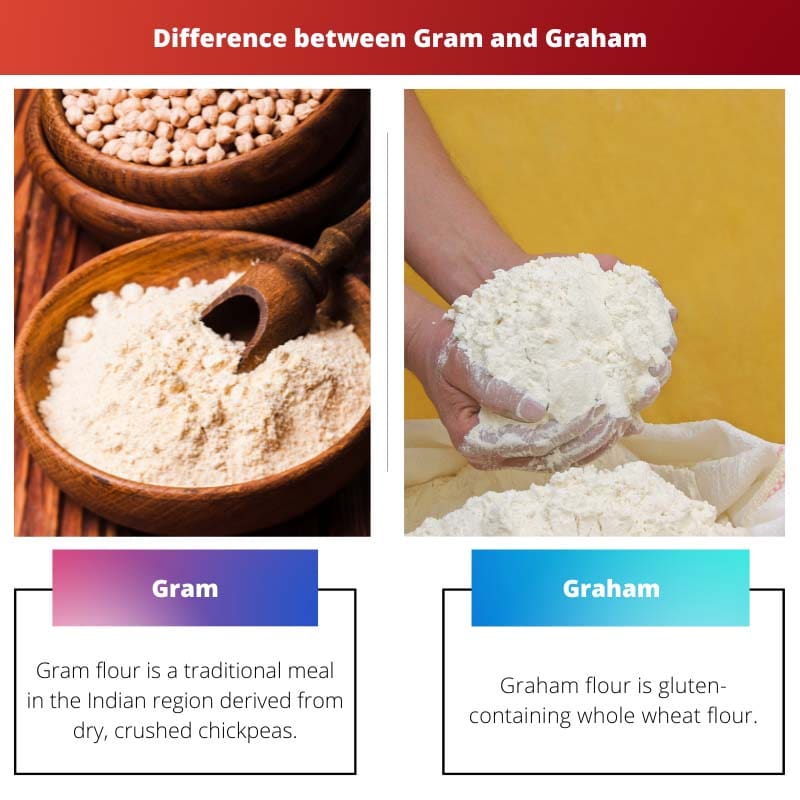There are various types of flour. In theory, everything that can be worn down can be flour. Flour may be made from almost virtually anything.
Anyone with celiac disease or gluten sensitivity needs to recognize which types of flour are gluten-free, and gram and graham are two of the numerous forms of flour.
Key Takeaways
- A gram is a unit of mass in the metric system, equal to one-thousandth of a kilogram.
- Graham refers to a type of whole wheat flour or a cracker made from this flour, named after the 19th-century health reformer Sylvester Graham.
- A gram is a unit of measurement, while graham refers to a specific type of flour or cracker.
Gram Vs Graham
The difference between gram and graham flour is that gram is gluten-free! Chickpeas, popularly called garbanzo beans, are used to make it. They belong to the legume genus. On the other hand, graham that’s whole wheat flour. Sylvester Graham created Graham Grain because he believed that refined flour was bad.

Gram flour is primarily utilized in the preparation of Indian cuisine. It develops in pods, much like pods. They have a light yellow tint to them.
Besan, chana, Cici, pea, or hummus seem to be some permutations of the name. Proteins, fibre, and carbs are abundant in gram flour. It also tastes nutty.
Graham flour contains higher pulverized grains than some other flour. As an outcome, the flour becomes coarser and darker. Winter grain endosperm is worn down and combined with crushed wheat grains.
The endosperm produces glucose and nutrition in the seed tissue. This balance between bran and germ distinguishes graham flour from wheat flour.
Comparison Table
| Parameters of Comparison | Gram | Graham |
|---|---|---|
| Definition | Gram flour is a traditional meal in the Indian region derived from dry, crushed chickpeas. | Graham flour is gluten-containing whole wheat flour. |
| Origin | Gram flour is said to have been invented on the subcontinent of India around the 1930s. | Graham’s type of flour was invented in the 1830s by Sylvester Graham. |
| Another Name | Is Gram flour, known as besan in the Asian subcontinent (mainly India), is a widely used ingredient. | Graham flour is referred to as wholemeal flour (which is basically a British usage). |
| Use | In India, gram flour is used as a facial cleanser when combined with water or yogurt to form a paste. | Graham flour is commonly used in the production of graham wafers, as well as other bread and cereals. |
| Calories | Gram flour, known as besan, has 387 calories per 100 grams. | Per 100 grams of whole wheat flour or graham flour, there are 340 calories. |
What Is Gram?
Gram flour has refined carbs, more fibre than other flours, no gluten, and more protein than other flours. Gram flour, commonly known as besan, is a pulse flour made from pulverized chickpeas.
It’s a common ingredient in Indian subcontinent cuisines like Indian, Nepali, Caribbean, Bangladeshi, Sri Lankan, and Burmese.
Gram flour is used as a facial exfoliator in the Indian Subcontinent, where it is mixed with water or dahi (yoghurt). It could be used as an egg replacer in vegan cookery when blended with equivalent water.
Gram flour, also known as pe amount in Burmese, is widely used in Burmese cooking. Toasted grams of flour are frequently used to flavour Burmese dishes and are the primary ingredient in Burmese tofu.
Roasted gram flour can also be used to enhance a variety of noodle soups, such as mohinga and ohn no Khao swè.
Gram flour is used to prepare jidou liangfen, a Yunnanese delicacy Burmese tofu stew.
The flour prepared with garbanzo beans, a different species of chickpea strongly linked to Bengal gram, is used to obtain a fine pancake that is roasted in the oven all along the coastline of the Ligurian Sea.
In Algeria and the east of Morocco, a delicacy called Karan is made from gram flour and eggs and baked in the oven. A comparable well-known meal was created in Algeria, which derives from the Spanish phrase “Calentica,” meaning “hot.”

What Is Graham?
Researcher Sylvester Graham created graham ingredients in the 1830s to wean consumers off polished white flour.
He anticipated that preserving the endosperm, microbes, and grain bran throughout the milling operation would contribute to creating a healthy community during the Industrial Transition.
Graham flour is supplied fully prepared for baking but should be warmed before use. It is a much more difficult-to-find speciality product and much more expensive than traditional store-bought flours.
Graham flour is a finely ground full wheat flour that is sometimes used in the production of graham wafers and perhaps some loaves and muesli.
This is titled after Sylvester Graham, a pioneer in the American wellness nutrition sector. Around the world, various types of full wheat flour comparable to graham flour are being used.
Because uncooked wheat flour of any type can contain disease-causing bacteria, graham flour should be processed before consumption.
It is supplied prepared to be used and can be used to produce graham crackers, various crackers, brown loaves, traditional whole wheat loaves, granola, and oats.
Most of the meals are baked, but some (such as brown bread) can be boiled.
Graham flour gives cooked foods a crunchy, roasted, sweet flavour as well as a substantial texture. The flavour is most commonly associated with graham crackers, in which the flour is customarily blended with honey for an elevated delicacy.

Main Differences Between Gram and Graham
- Gram flour is a gluten-free whole grain flour made with dry, smashed chickpeas, whereas graham flour is a traditional Indian meal made from dry, crushed chickpeas.
- Gram flour was developed in the 1930s on the Indian subcontinent, whereas Sylvester Graham invented graham flour in the 1830s.
- Gram flour, commonly referred to as besan in the Asian subcontinent (especially India), is a common component, whereas graham flour is more commonly known as whole-grain flour (which is commonly a British usage).
- Gram flour, when mixed with liquid or yoghurt to make a paste, is used as a facial cleanser in India, whereas graham flour is used to make graham wafers and other bread and cereals.
- Gram flour, also called besan, contains 387 calories per 100 grams, compared to 340 calories per 100 grams of whole wheat flour or graham flour.




